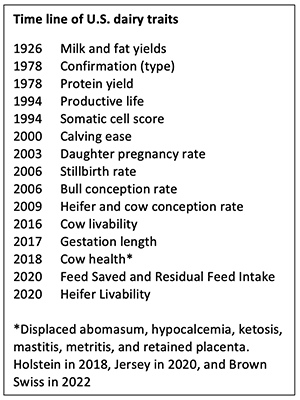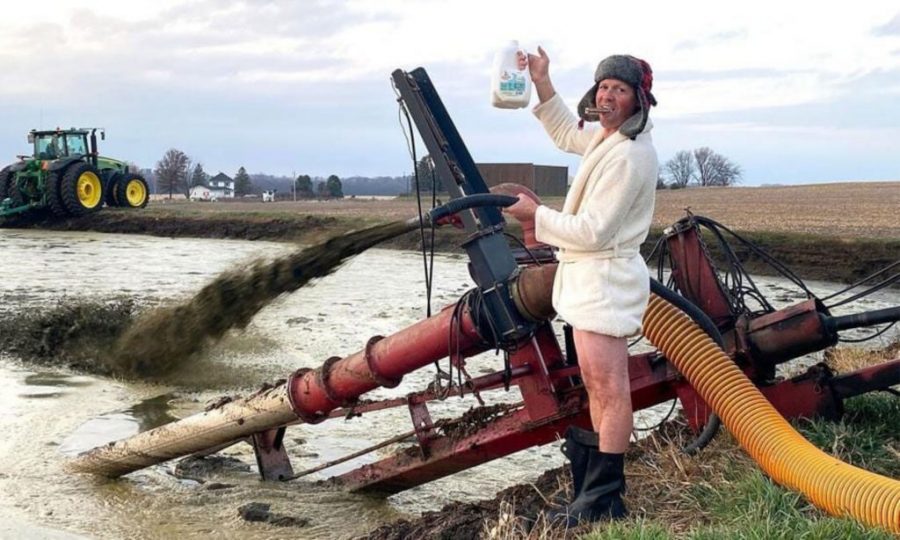If you think of the “food industry” as a single entity, you ignore the fact that its three main parts—raw material production, or “farming,” manufacturing, and retail—have very different strategic drivers.
In the FMCG basket, you can find many grocery items that aren’t food. These range from cleaning and home goods to health, beauty, personal, and pet care. If you go to any grocery store, these non-food categories take up about 20% of the shelf space.
Farming
The “family farm” used to be the most common type of farm, but that is becoming less common as scale, which is made possible by capital, replaces intergenerational family ownership.
When a company owns a farm, the costs go down, but the farm is more likely to become a monoculture as short-term profits become more important.
Even though it isn’t perfect, the register of foreign ownership shows that 14.1% of agricultural land is owned by foreigners as of June 2021. This is up from 10.9% the year before.
The National Farmers Federation says that Australians own about 99 percent of farm businesses. It’s clear that the big are getting bigger at the expense of the small.
Infrastructure for farm production management needs a lot of money spent on it. Rail networks are broken, and the roads are a mess. This is a long-term problem, and the costs of running a farm will go up faster than the rate of inflation.
Manufacturing
A report from the AFGC says that retail concentration is a big reason why profits are going down, which means that imports will gain ground.
At the moment, the industry that makes food and drinks employs 276,000 people, 40% of whom work in rural areas. The industry’s output is worth $127 billion, which is 32% of all manufacturing output in Australia.
In other words, it is big and has a lot of different people and places, so it should be a big part of how we think about educating and training future leaders.
Gross numbers for the industry show that almost 30% of the value of what is made is exported. The problem is that most of this is raw or only lightly processed meat and grains, which don’t hire many people anywhere along their supply chains and compete in commodity markets.
One of the eight directors of the Australian Food and Grocery Council, the industry’s “representative” body, is the CEO of an Australian beverage company. The other nine directors are all CEOs of multinational companies.
This is not a bad thing, except for the obvious fact that it keeps lobbying and government policy in favour of MNCs instead of locally owned businesses.
As a young man in the late 1970s who had been a nomad for a few years, there were many different kinds and sizes of businesses I could work for. Over time, both the number and variety have dropped by a lot.
Important industries, like dairy, are almost entirely run by multinationals now. The only exception is produce, where there are still a lot of farm suppliers, even though a few very large consolidators, like Costas, now control most of the retail supply chain.
Aside from a few small organic brands, there are no proprietary produce brands in retail. This is because retailers have made sure to absorb all the proprietary margin in produce.
If there is a light at the end of the tunnel, it may be Bega. The disruption of supply chains and the low profit margins of FMCG manufacturing have made it harder to see the light.
Bega Cheese was saved from the receiver in the early 1990s by Dairy Farmers Ltd, which is now owned by a foreign company. Since then, Bega Cheese has been able to grow by buying the Port Melbourne site of Kraft, which was sold to Mondelez, and by buying the Vegemite brand and, more recently, the rebranded peanut butter business.
Maybe this is the start of something good?
Retail
The size and share of Australia’s food and grocery market depend on what is included.
Most studies show that Woolworths has about 37% of the market, Coles has about 28%, and Aldi, which is now the real third force, has about 11%. The wholesaler supplied groups have about 7%.
The last 17 percent is made up of a mix of fresh and farmer’s markets, delivery straight from the farm, small independent stores, and convenience stores.
There is also a huge food service market, with everything from small restaurants and takeout to fast food chains and five-star restaurants. This industry uses a lot of goods and puts thousands of people to work.
This group of 76 percent of food and grocery sales has a lot of power. As they have grown, they have moved out of the crowded retail market of the 1970s and 1980s, taking over or leaving behind weaker competitors.
They have used a variety of strategic weapons that are a perfect example of Michael Porter’s five forces to squeeze the profit margins of manufacturers.
As a result, manufacturers have also grown by using regional manufacturing hubs, which are usually in Asia.
The effect on domestically owned manufacturing has been huge, and it got worse when the Australian dollar was worth more than the US dollar. This made more people buy house brands made overseas, wiping out most of what was left of locally owned manufacturing.
With a few notable exceptions, like San Remo, Bega, and Sanitarium, which do not pay tax, most Australian-owned food manufacturing is done by small-scale cottage manufacturers who depend on the 24 percent of the market that is not controlled by the three retail “gorillas.”
It is fair to point fingers at the retailers while acknowledging that the local management failed to come up with a good plan.
The big FMCG brands that were built up by domestic companies over a long time didn’t realise how important it was to keep their brands in the long run.
Instead, they gave in to retailers’ demands for short-term promotional dollars that helped retailers’ profit margins and kept prices low.
Short-term, consumers may have benefited from the competition between prices, but they had a lot less to choose from.
In the long run, they will have to deal with the effects of an economy where only a small part of its biggest manufacturing industry is able to make strategic decisions based on what is most important to the country.
A few ideas about what’s to come
Technology has no choice but to take over more and more of the industry in all of its parts.
Australia is already one of the best places in the world to make and use agricultural technology.
If we don’t speed up the rate of innovation, Australian agriculture will lose the productivity edge it has now. Even though we have great farmers, the continent’s soils are old and poor, and there are a lot of climate risks.
So, if we want to keep our position, we need to keep getting smarter.
Changes in retail are happening in other places. Technology like “Amazon Go” will change the way people shop, and home delivery won’t go away.
Australian retailers, on the other hand, are set on improving the business model that has made them successful in the past. This will make room for different retail formats and ways of doing business.
Retailers are good at selling things, but they aren’t very good at making new ones.
In the past, businesses came up with new products and categories by getting to know their customers.
Those businesses are almost gone, though, so where will the next big idea come from? Not from the office of a buyer whose key performance indicators today are all about margin.
In a country as big and diverse as Australia, where logistics are so important, the logistics infrastructure is in bad shape.
Rail networks are broken, roads are getting worse, which was made worse by recent flooding, and it’s hard to find drivers for heavy and long-distance equipment.
The average age of all transport drivers is getting close to 50, and the average age of long-haul semi drivers is now 55, and no one is replacing them. When you think about jobs like picking up cattle from farms, which require specialised driving skills, the situation is already bad.
In short, the Australian food industry is facing a number of big problems that have been building up for a long time.
They will not be effectively addressed by industry or public authorities that think in terms of only a four or five year strategic horizon.
Allen Roberts is the head of StrategyAudit, a company that helps companies find and get rid of the things that stop them from doing their best.







 Holstein UK is delighted to announce that South Wales dairy farmer Iwan Morgan has been appointed as the judge of The National Holstein Show at UK Dairy Day 2023.
Holstein UK is delighted to announce that South Wales dairy farmer Iwan Morgan has been appointed as the judge of The National Holstein Show at UK Dairy Day 2023. On Wednesday, November 30, World Dairy Expo hosted its annual Friends of Expo celebration, honoring the hundreds of volunteers, paid workers, and partners who make World Dairy Expo possible. Highlighting the evening was the presentation of the 2022 Friends of Expo awards. Receiving recognition this year were Bob and Marge Kaether, Berta Hansen and Adam Alesch.
On Wednesday, November 30, World Dairy Expo hosted its annual Friends of Expo celebration, honoring the hundreds of volunteers, paid workers, and partners who make World Dairy Expo possible. Highlighting the evening was the presentation of the 2022 Friends of Expo awards. Receiving recognition this year were Bob and Marge Kaether, Berta Hansen and Adam Alesch.





